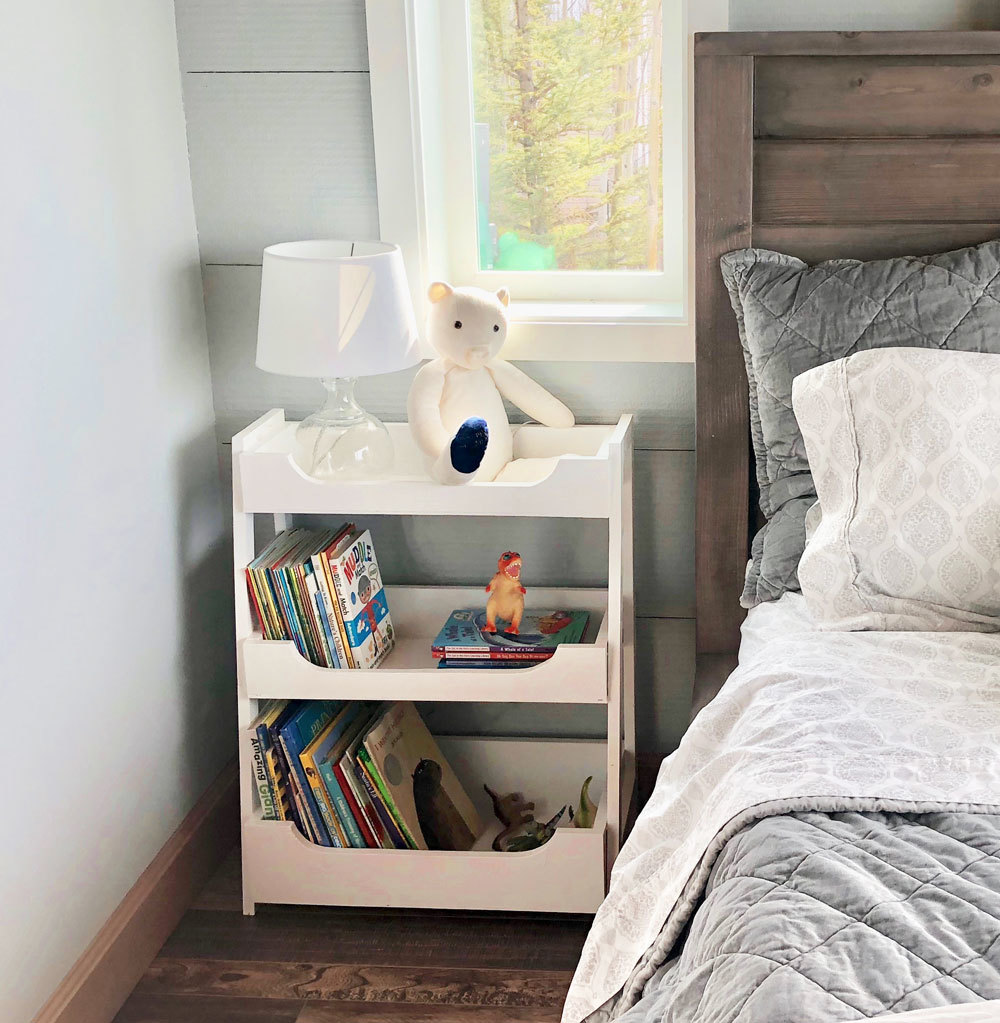
DIY Ladder Bookshelf - free plans from ANA-WHITE.com
Dimensions

Dimensions shown above
Preparation
Shopping List
1x4 - 12 board feet
1x6 - 8 board feet
1x2 - 16 board feet
1/4" plywood panel - 24" x 48"
Common Materials
Cut List
4 - 1x4 @ 22-1/2"
2 - 1x4 @ 9"
2 - 1x4 @ 11"
2 - 1x6 @ 22-1/2"
2 - 1x6 @ 13-1/2"
1 - 1/4" plywood 24" x 9"
1 - 1/4" plywood 24" x 11"
1 - 1/4" plywood 24" x 13-1/2"
2 - 1x2 @ 30"
2 - 1x2 @ 30-1/2" - both ends cut at 10 degrees off square, long point to short point measurement, ends ARE parallel
2 - 1x2 @ 9-1/2" - one end cut at 10 degrees off square, longest point measurement
2 - 1x2 @ 5-1/2" - one end cut at 10 degrees off square, longest point measurement


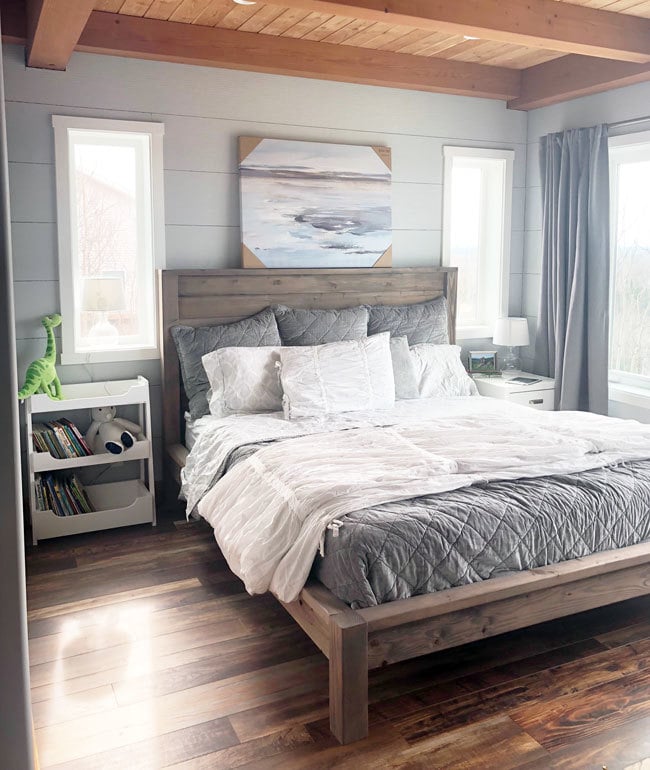
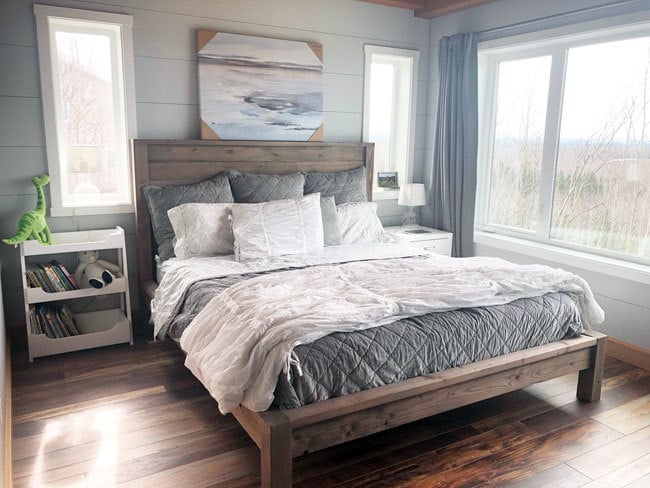















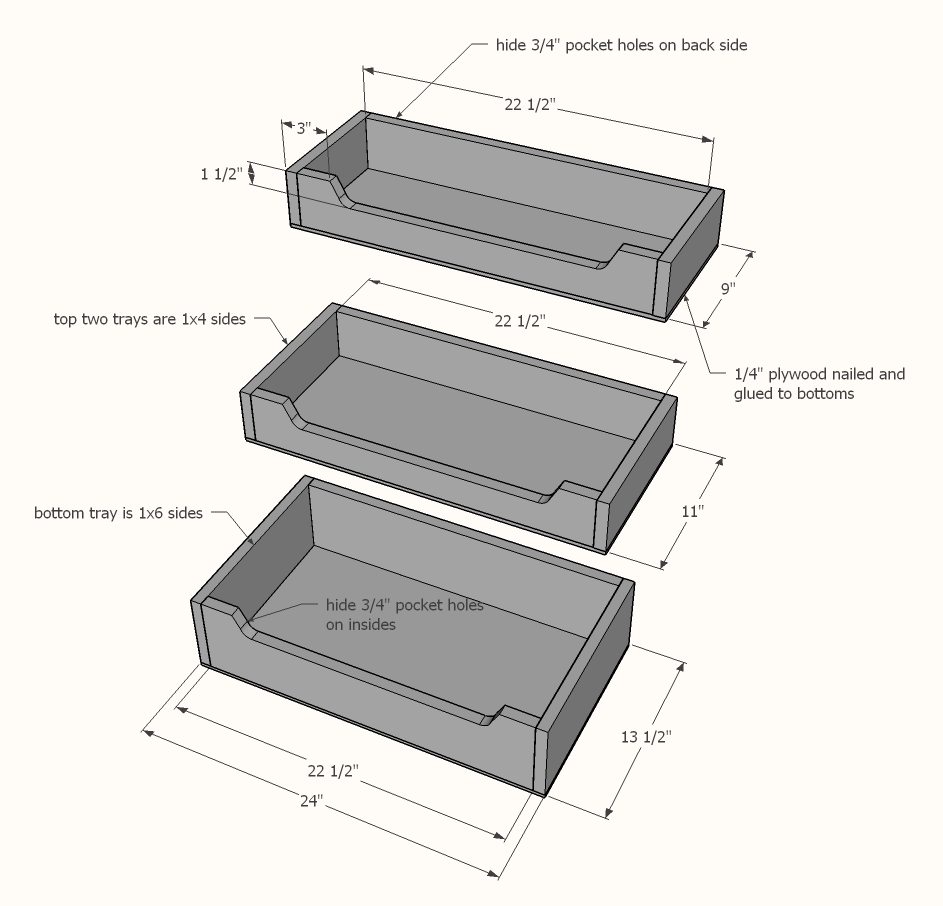
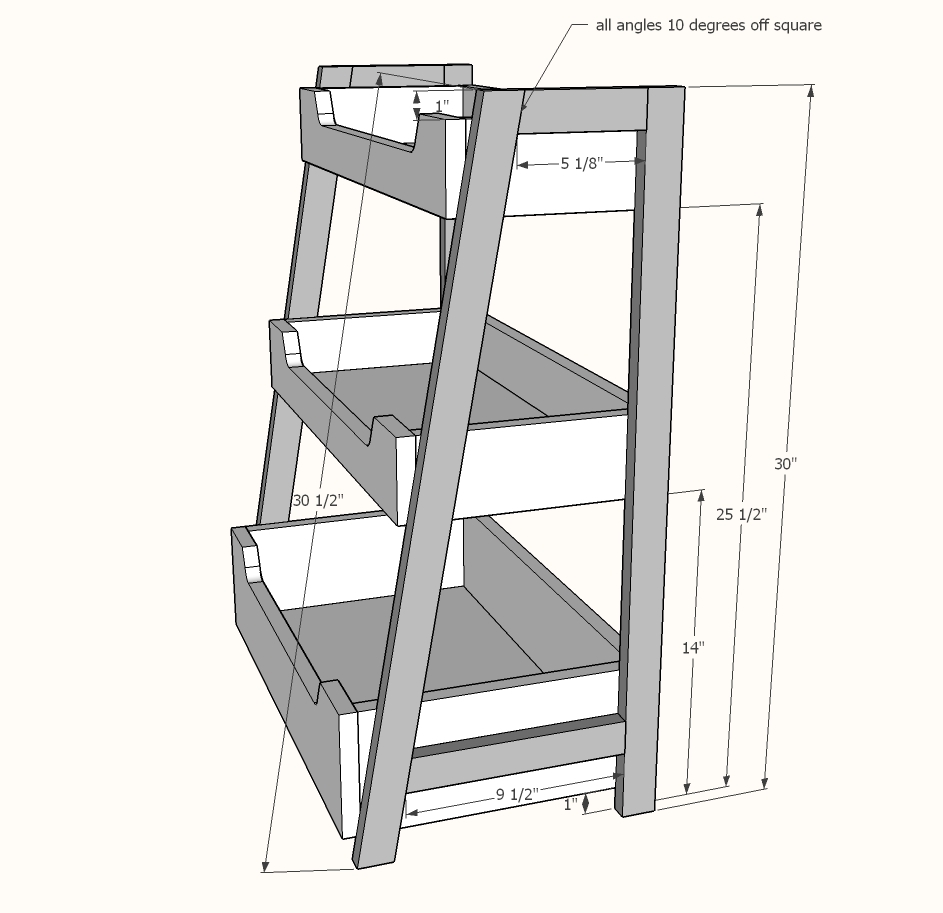

Comments
MCN
Mon, 06/17/2019 - 08:27
My skill level is not yet…
My skill level is not yet intermediate, but after watching the video and reading the plans, I thought this was a project I could handle. There are a few places where I got hung up - the biggest being that the illustrations do not match the finished product or the video. One of the pictures shows the sides of the trays on the outside of the fronts, but your finished nightstand and another illustration show the sides tucked into the fronts. This obviously changes the size of the plywood bottoms, as well as where the pocket holes should be placed (short or long side of trays) I found some of the other instructions a bit vague as well but that could be because of my skill level. Thank you for the free plans!